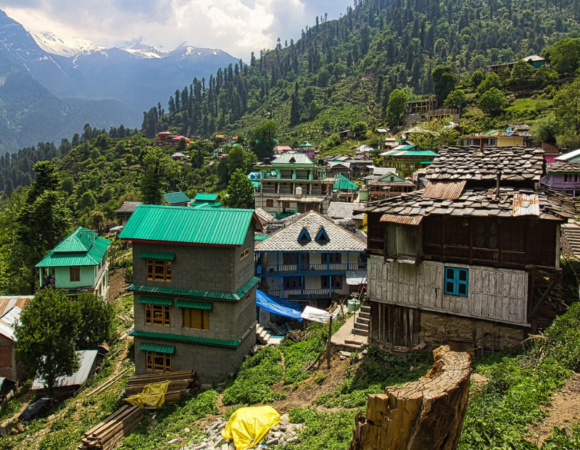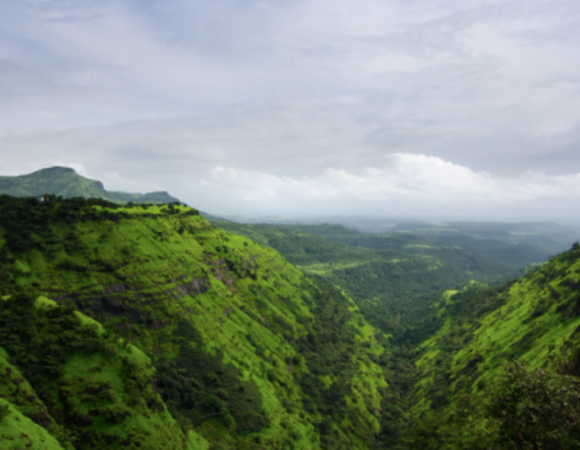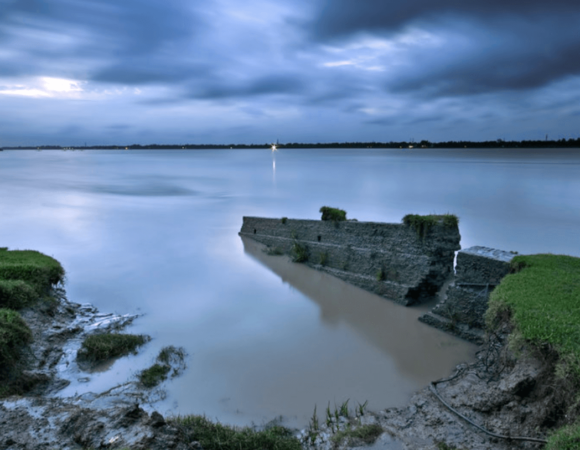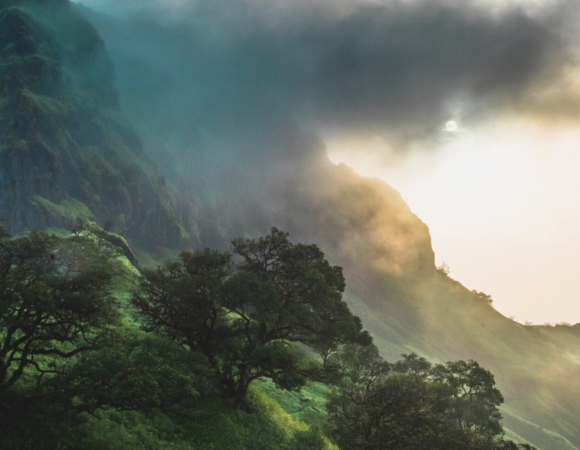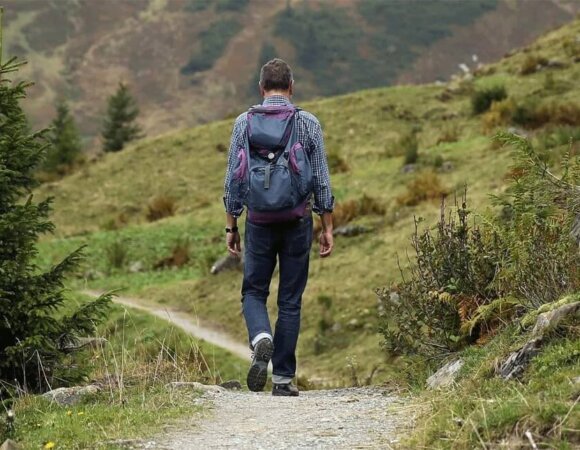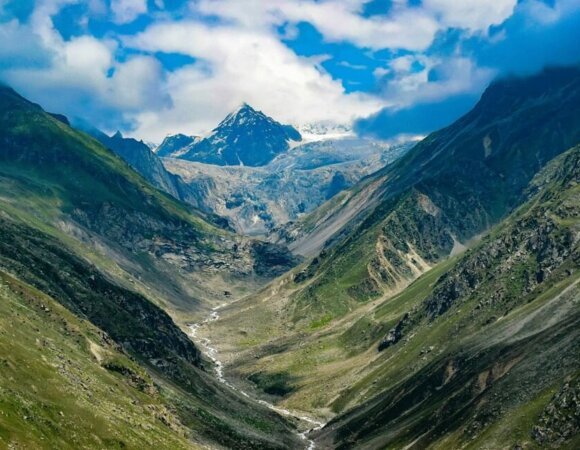Nanda Devi Inner Sanctuary Trek Guide 2024: History, Highlights, Best Season, Best Time and Itinerary
Table of Contents
ToggleNanda Devi National Park was formed in 1982 in the Chamoli district of Uttarakhand, India’s northernmost state. In 1988, the park, together with the Valley of Flowers from the northwestern side, was designated a UNESCO World Heritage site. At an elevation of 7,000 meters, the panoramic view of the National Park’s highlands includes Trishul, Dunagiri, Changband, Kalinka, Rishi Pahar, Mangraon, Nanda Devi, Nanda Devi East, Bethartoli, and Maiktoli, to mention a few peaks.
Nanda Devi National Park, located at a great height in the western Himalayas, offers exceptional biodiversity with its soft meadows and abundant flora and animals around the ecosystems.
The Nanda Devi basin was proclaimed a sanctuary in 1939, and 630 square kilometers were added later to create the Nanda Devi National Park. This park’s abundant flora and wildlife, such as Brahma-Kamal and Bharal, make it a natural wonder that is tranquil to enjoy. Nanda Devi is a famous hiking destination because of its variety and rough terrain. Nanda Devi sanctuary is home to 80 distinct bird species, as well as 312 plant species, 17 of which are deemed rare.

The Nanda Devi Sanctuary is separated into two sections: the Inner and Outer. They are encircled by the main Sanctuary Wall, which has a roughly square layout with high, continuous ridges on the north, east, and south sides. On the west side, lower but still impressive hills decline from north to south toward the Rishi Ganga Gorge, which drains the Sanctuary to the west.
The Inner Sanctuary takes up nearly two-thirds of the entire area and includes Nanda Devi as well as the two major glaciers surrounding the mountain, the Uttari (north) Rishi Glacier and the Dakshin (south) Rishi Glacier. The lesser Uttari Nanda Devi and Dakshni Nanda Devi Glaciers supply these. Eric Shipton and H. W. Tilman were the first people to enter the Inner Sanctuary through the Rishi Gorge in 1934.
The Inner Sanctuary takes up nearly two-thirds of the entire area and includes Nanda Devi as well as the two major glaciers surrounding the mountain, the Uttari (north) Rishi Glacier and the Dakshin (south) Rishi Glacier. The lesser Uttari Nanda Devi and Dakshni Nanda Devi Glaciers supply these. Eric Shipton and H. W. Tilman were the first people to enter the Inner Sanctuary through the Rishi Gorge in 1934.
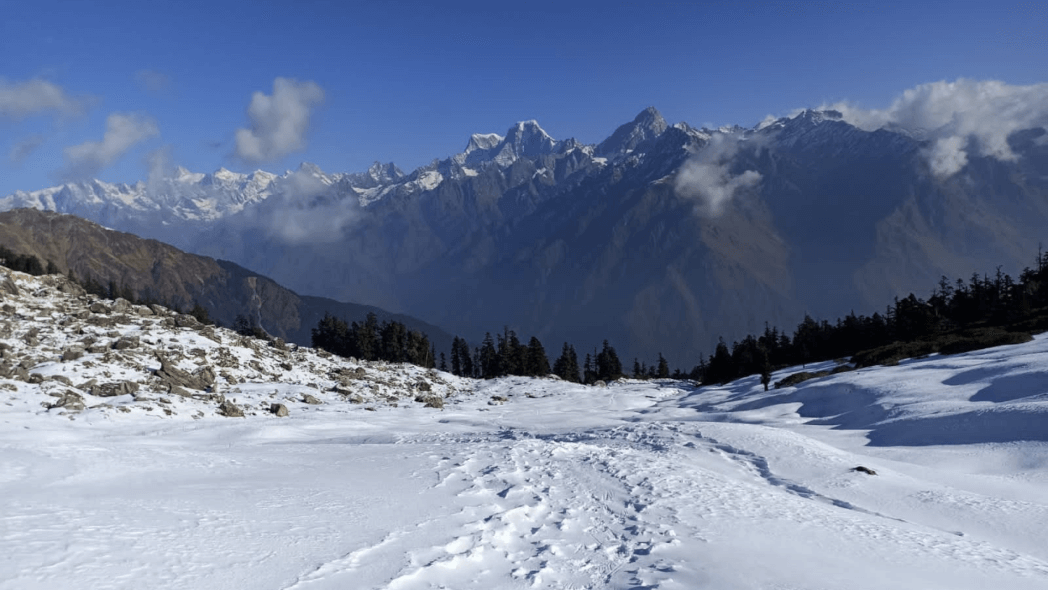
The Outer Sanctuary takes up the western part of the Sanctuary and is divided from the Inner Sanctuary by steep hills through which the Rishi Ganga flows. The Rishi Ganga divides it; on the north side, the Ramani Glacier flows down from the slopes of Dunagiri and Changabang, while on the south, the Trisul Glacier flows from the summit of the same name.
This section of the Sanctuary is accessible from the outside (though traversing a 4,000 m (13,000 ft) pass is required). Peaks Surrounding the National Park Some of the notable peaks that surround the Nanda Devi National Park are Dunagiri (7066m), and Kanchenjunga. (6864mt), Changband, Kalnka (6931mt) Mangraon (6765mt), Nanda Khat (6631mt), Maiktoli (6803mt), Mrigthuni (6655mt), Trishul-1 (7120mt), Trishul-II (6319mt), Bethartoli Himal (6352mt), and Nandadevi East (7434 mt.).
The Nanda Devi Sanctuary in India’s Garhwal Himalayas is a one-of-a-kind geological phenomenon. A ring of peaks linked by enormous granite walls that drop no lower than 17,000 feet/5200 meters, producing an impenetrable sanctuary. The lone exception is when the river Rishi Ganga, which drains this vast valley, emerges to the west in one of the world’s most stunning canyons.
This mountain range contains at least twelve summits that rise beyond 21,500 feet/ 6500 meters, including numerous well-known names like Changabang and Dunagiri to the north and Trishuli and Nanda Kot to the west and south. The towering Nanda Devi stands in the center. The highest mountain in India, at 25,643 feet/7816 meters. Until 1934, no one had ever explored this Sanctuary.
The Sanctuary was closed to tourists in 1983 to protect the fragile ecosystem of this formerly pristine place, which required time to recuperate following the inevitable harm inflicted by expeditions and shepherds who were also making their way in.

An acclimatization walk is recommended before beginning this climb, which ascends to 14,294 feet/4463 meters at Tapovan. The acclimatization walk is a short Himalayan excursion with the singular objective of traveling through the foothills and hill villages where the world-famous legend of the ‘Man-Eating Leopard of Rudraprayag,’ recorded by naturalist-hunter Jim Corbett, is established.
The scenery is stunning, with commanding views of the Garhwal Himalayas’ major peaks and pathways that take you past lush terraced slopes, pristine forests, and small hill communities. The weather is warm and sunny at this time of year, with a gorgeous blue sky.
History of Nanda Devi Inner Sanctuary Trek
According to historical sources, W.W. Graham was the first to investigate the area. Later, in 1934, Eric Shipton and H.W.Tilman were among the few who entered the inner sanctuary via Rishi Ganga. The sanctuary is separated into two sections: the inner sanctuary and the outside sanctuary. The inner sanctuary takes up the eastern two-thirds of the entire sanctuary area, while the outer sanctuary takes up the western two-thirds. T.G.Longstaff, who ascended Trisul in 1907, was the first explorer of the outer sanctuary.
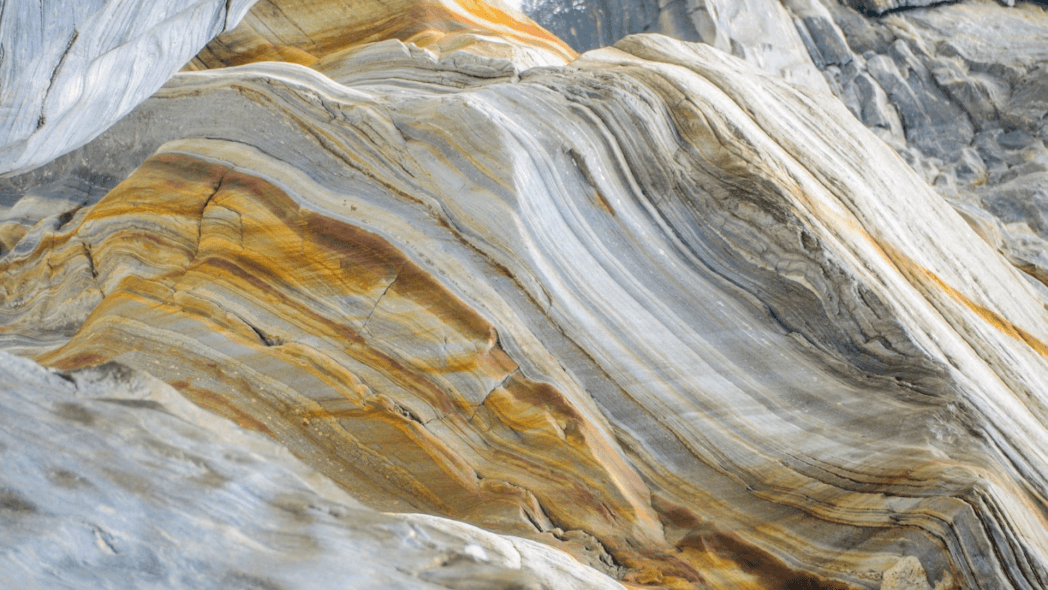
Nanda Devi National Park, which is known for its unusual Himalayan flora and animals, was designated a UNESCO World Heritage Site in 1988. Nanda Devi Park was designated as a World Network of Biosphere Reserve by UNESCO in 2004. This park is surrounded by a 5,000-kilometer buffer zone.
| Area | Garhwal Himalayas, Uttarakhand |
| Duration | 21 Days (6-day travel/15 days trekking) |
| Best Season | May – October |
| Grade | Tough |
| Altitude | 4900 mts |
| Trekking Length KM | 165 K.M |







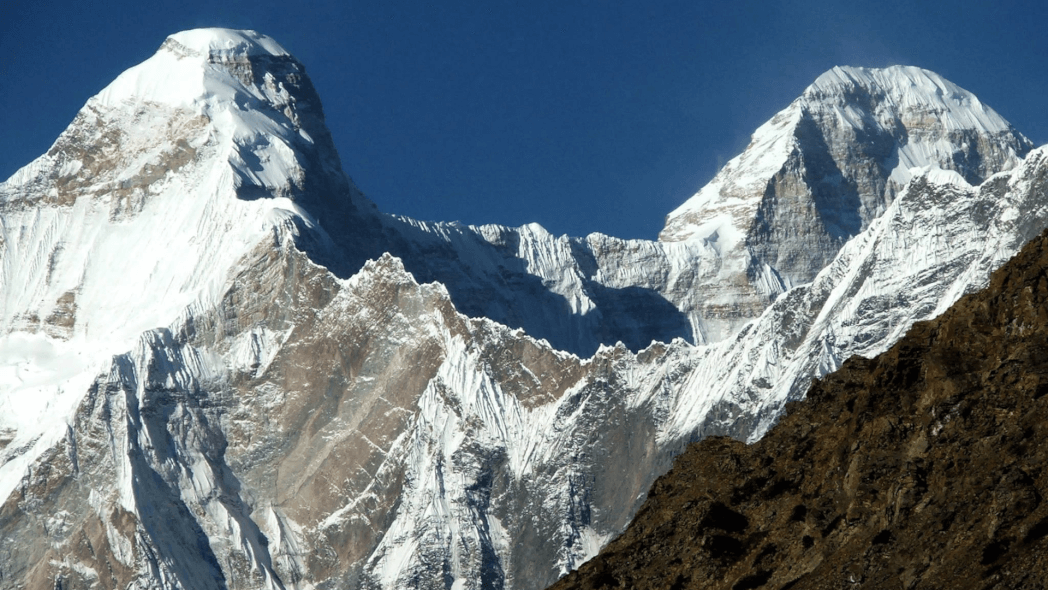







Highlights of Nanda Devi Inner Sanctuary Trek
- The immense Himalayan wilderness is breathtaking.
- The park kept its inaccessibility to safeguard its biodiversity, which includes various endangered creatures such as the Himalayan musk deer and the snow leopard.
- Flora and animals abound, including Brahma-Kamal and Bharal.
- It Is a tranquil experience.
Location of Nanda Devi Inner Sanctuary Trek
The Nanda Devi National Park, also known as the Nanda Devi Biosphere Reserve, was formed in 1982 and is located around the mountain of Nanda Devi in the Chamoli Garhwal region of Uttarakhand, in northern India. The park as a whole is located at an elevation of more than 3,500 meters above mean sea level.
Best Season to Visit Nanda Devi Inner Sanctuary Trek
Summer is from April to June, while fall is from September to October (Autumn)
Summer: Throughout the summer, the temperature is temperate and pleasant, neither too hot nor too cold.
Monsoon: Because the area receives rainfall during the monsoon, the routes stay closed due to landslides. It will be a difficult climb, but the breathtaking vista of the surrounding mountains will be well worth the effort.
Autumn: Best season to go trekking since the sceneries are in full bloom.
How to Reach Nanda Devi Inner Sanctuary Trek
By Air:-
The nearest airport is Jolly Grant Dehradun, which is 315 kilometers away. The airport is easily accessible from Delhi and other metros. A taxi, cab, or bus may transport you to Joshimath from the airport.
By Train :-
Rishikesh railway station is the nearest, with connections to Haridwar, Dehradun, and other regions of Uttarakhand.
By Road :-
The nearest main road leads to Lata village, which is 30 kilometers from Joshimath and is also well served by bus services. Joshimath is accessible by road to Rishikesh and other major cities in the surrounding area.
Itinerary for Nanda Devi Inner Sanctuary Trek
Day 01: Delhi – Rishikesh (Train)
Board a Shatabdi Express at 06:50 a.m. to arrive in Haridwar at 11:25 a.m. When you arrive in Haridwar, take the route to Rishikesh and check into your accommodation. In the evening, one might go sightseeing in Rishikesh. Staying in a hotel for the night.
Day 02: Rishikesh – Joshimath (6200 ft/ 1890 meters)
Begin your journey to Joshimath early in the morning, traveling through a route with beautiful vistas of mountains and rushing rivers flowing from the Himalayas. When you get in Joshimath, check into a hotel for the night.
Day 03: At Leisure in Joshimath
The day will be spent resting at Joshimath, a tiny town in Uttarakhand. Because it is located on the road to Badrinath, one of the most important Hindu pilgrimage locations, the area is frequently thronged by pilgrims. The hotel in Joshimath will be our home for the night.
Day 04: Joshimath – Lata (7995 ft/ 2437 metres/ 45 minutes)
Today, drive to Lata Village. It is a tiny settlement near the confluence of the rivers Rishi Ganga and Dhauli Ganga. After five hours of driving, you will arrive at Tapovan, which is famous for its natural hot springs. Contact Lata. It is the point where the dirt road begins and your vehicle adventure concludes. At Lata Village, you will spend the night in tents.
Day 05: Lata – Lata Kharak (12467 ft / 3800 metres/ 7 hours)
Start your trip from Lata Village to Lata Kharak. It is a strenuous hike with steep slopes, yet it is surrounded by natural beauty in the form of rhododendron, oak, and pine forest. Travel to Lata Kharak, where you will spend the night in tents while admiring the flora and animals.
Day 06: Rest and Acclimatization
The day will be spent resting and acclimatizing while admiring the views from the Lata Kharak. A two-hour trip to Semi Kharak is recommended for mild hiking exercise in a fresh setting. Semi Kharak offers a spectacular view of Nanda Devi and Rishi Valley. At Lata Kharak, spend the night in tents.
Day 07: Lata Kharak – Debrugheta (10827 ft/ 3300 metres/ 8 hours)
Cross the Dharansi Khal (pass) today, which is at a height of 13,943 feet / 4250 meters. From the pass, follow a curving trail to the Dharansi Plateau’s meadows. This location is not suitable for camping due to a lack of water. Cross the plateau and begin a lengthy and steep descent (about 3 km) to a grazing pasture at Debrugheta. The camp is only a short hike away after crossing a brook. spend the night in tents.
Day 08: Debrugheta
Spend the day relaxing and enjoying yourself at the camp, which is situated above a gorgeous spot. Eric Earle Shipton, an English Himalayan mountaineer, appreciated the grandeur of this place, calling it “…one of the prettiest spots it had ever been his good fortune to view.” overnight stay in tents
Day 09: Debrugheta – Deodi (7545 ft/ 2300 metres)
Begin your journey down the Rishi Ganga gorge. The trek is very simple, with the route going up and down multiple times. To go to your campground, cross the Rishi Ganga at Dodi. overnight stay in tents.
Day 10: Deodi – Ramni
Begin the climb that winds up the southern side of the gorge. Arrive at Ramni, the next campground, which is nestled between the cliffs and the raging Rishi Ganga. Spend the night in the tents.
Day 11: Ramni – Patalkakhan
This day marks a pivotal point in your adventure. You will enter the Nanda Devi Sanctuary while traversing rough terrain. You can camp on a slab platform at Tilchaunani depending on the weather and time of year. Alternatively, go a little further to reach Patalkakhan (located within the Inner Sanctuary) at a somewhat higher height of 14,763 feet/ 4500 meters and camp there. overnight stay in tents
Day 12: Patalkakhan – Nanda Devi Base Camp
Begin the climb that winds up the southern side of the gorge. Arrive at Ramni, the next campground, which is nestled between the cliffs and the raging Rishi Ganga. Spend the night in the tents.
Day 13: Exploration of the Inner Sanctuary
We now have three days to explore and travel throughout the refuge. The Nanda Devi Sanctuary may be explored in a variety of ways. If the weather is clear, you may view the glaciers to the south of the refuge and depart from there, exactly as famed British mountaineers Shipton and Tilman did in 1934. Alternatively, you may bridge the Rishi River and visit the northern half of the sanctuary, from where you can get a spectacular view of Nanda Devi Mountain. overnight stay in tents
Day 14 – Day 15: Explore nearby Inner Sanctuary
Travel around the Nanda Devi Inner Sanctuary Trek .
Day 16: Inner Sanctuary – Bhojgara
Begin your trip back after three days of seeing the Inner Sanctuary. The fall will continue until you reach Bhojgara, where you will spend the night. The scenery around the campground is breathtaking. Begin your trip back after three days of seeing the Inner Sanctuary. The fall will continue until you reach Bhojgara, where you will spend the night. The scenery around the campground is breathtaking.
Day 17: Bhojgara – Deodi
Continue your trek along the path. After navigating across granite slabs, arrive at Ramni for a considerably easier trek. Arrive in Deodi camp and spend the night in the tents. Continue your trek along the path. After navigating across granite slabs, arrive at Ramni for a considerably easier trek. Arrive in Deodi camp and spend the night in the tents.
Read more: Shivling Trek
Day 18: Deodi – Dharansi
Continue your trek along the route. After navigating across granite slabs, you’ll arrive at Ramni, which has a considerably easier route. Arrive at Deodi’s camp and spend the night in the tents. Cross the Rishi Ganga and follow a meandering trail through the canyon on the river’s northern side. Pass through the Debrugheta meadows and begin a difficult ascent into Dharansi. Tents are used for overnight stays
Day 19: Dharansi – Lata
You will travel to Lata Village through Lata Kharak from Dharansi Khal. Along the route, you will be able to glimpse the Dhauli Ganga River flowing below. Make your way through the woods and camp at Lata.
Day 20: Lata – Joshimath – Rudraprayag
Drive to Rudraprayag via Joshimath first thing in the morning. You can swim at the Tapovan hot springs if you like. Check into the hotel upon arrival in Rudraprayag. Overnight stay at a hotel
Day 21: Rudraprayag – Haridwar – Delhi
Transfer to Haridwar train station in the morning and board a train to Delhi at 18:10 hrs. Arrival in Delhi at 22:45 hrs.
Frequently Asked Questions for Nanda Devi Inner Sanctuary Trek
Is the Nanda Devi Inner Sanctuary Trek difficult?
It is a demanding trip due to the harsh terrain and high elevation.
How tall is the Nanda Devi Inner Sanctuary Trek?
The excursion is difficult owing to the tough terrain and high elevation. The Nanda Devi Inner Sanctuary Trek is a challenging ascent with a maximum elevation of 4250 meters.
Which season is best to do Nanda Devi Inner Sanctuary Trek?
April to June (Summer) and September to October (Autumn).
How long is the Nanda Devi Inner Sanctuary Trek?
The Nanda Devi Inner Sanctuary Trek takes a total of 21 days.
Where is the Nanda Devi Sanctuary located?
Nanda Devi National Park, also known as the Nanda Devi Biosphere Reserve, is located around the mountain of Nanda Devi in the Chamoli Garhwal region of Uttarakhand, in northern India.
What is the weather like in Nanda Devi National Park?
The land is covered with snow for six months of the year. The region has a dry climate the rest of the year, with considerable rains from June to August.


